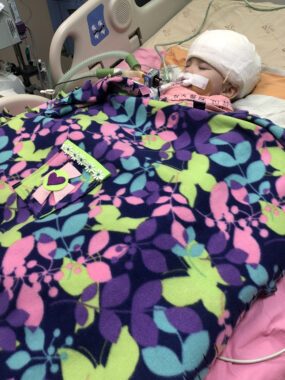Why we didn’t fear our baby’s AADC deficiency gene therapy
Remembering those days helps guide my responses to parents about to try it
Written by |

Social media is an extraordinary tool, especially for families affected by rare diseases who are scattered across the globe. Without it, many of us would never have found each other. These online connections have prompted me to reflect on our family’s journey and consider how our experiences might offer valuable insights to others.
My wife, Judy, and I initially used social media to stay connected with family and friends as we traveled the world. However, when our daughter, Rylae-Ann, was diagnosed with the rare disease aromatic l-amino acid decarboxylase (AADC) deficiency, we abruptly severed ties with social media, redirecting all our energy toward caring for her.
In time, we cautiously returned to social media, but with a singular focus: to find other families navigating similar challenges. As we learned to embrace our new path in life, these online connections evolved into deep friendships. Connecting with other families who shared our struggles and uncertainties provided Judy and me with a much-needed outlet, helping to alleviate the stress and depression that had become all too familiar.
Sharing experiences with new families
Recently, as improved pediatric diagnostic testing has led to new diagnoses of AADC deficiency, we’ve been contacted by families just beginning their journeys. Their questions about our experiences, particularly our thoughts on Rylae-Ann undergoing gene therapy, have caused us to revisit those intense early days.

Rylae-Ann peacefully rests and recovers from a 12-hour brain surgery for gene therapy. (Courtesy of Richard E. Poulin III)
Nearly five years ago, our daughter underwent an experimental gene therapy, which has since received approval in the EU and U.K. Reflecting on that period feels like revisiting a distant past, a whirlwind of events that passed in a blur. We were constantly on the move, solving one problem only to have another emerge.
When I recently responded to a family’s inquiry, stating that we’d had no fears about the surgery and were solely focused on Rylae-Ann’s post-operative care and progress, I realized how this answer might seem cavalier from their perspective. They stared back at me with furrowed brows and questioning looks. These parents, who are anxiously awaiting gene therapy for their newborns, naturally harbor deep fears about the procedure that cannot be dismissed.
Reflection on our gene therapy experience
That made me pause and reflect more deeply: Why did we feel no fear surrounding a brain surgery about which we knew so little? Before Rylae-Ann’s diagnosis, gene editing was merely a concept I vaguely recalled from the occasional science article or video. I knew little about the innovative treatment.
Once I learned gene therapy was a potential treatment option, I began to learn all that I could about it. I read articles, watched lengthy videos, and met with doctors. After all that, it still seemed like a sci-fi story and required a lot of faith that what we wanted to happen would, in fact, happen within the microscopic world in our daughter’s brain.
Judy and I revisited those days, reliving the highs and lows, and we arrived at a sobering conclusion: Our lack of fear stemmed from the undeniable reality that our daughter was fighting for her life. She’d been admitted to the pediatric emergency room multiple times. We weren’t just facing the unknown; we were grappling with the harsh reality of losing our child.
In that context, gene therapy wasn’t just an option — it was our only hope. Our backs were against the wall, and we had no choice but to embrace it, not out of bravery but out of necessity. And now, as we see the benefits unfold in Rylae-Ann’s life, we’re grateful for our decision. Yet we fully understand and empathize with the fears of parents about to embark on this journey.
Today I’m more aware of how I talk about gene therapy. I don’t want to come off as flippant, as if it’s akin to a routine trip to get a haircut. Their trepidation is valid, and we’re here to support them, just as we were supported by those who came before us.
Note: AADC News is strictly a news and information website about the disease. It does not provide medical advice, diagnosis, or treatment. This content is not intended to be a substitute for professional medical advice, diagnosis, or treatment. Always seek the advice of your physician or other qualified health provider with any questions you may have regarding a medical condition. Never disregard professional medical advice or delay in seeking it because of something you have read on this website. The opinions expressed in this column are not those of AADC News or its parent company, Bionews, and are intended to spark discussion about issues pertaining to aromatic l-amino acid decarboxylase deficiency.






Leave a comment
Fill in the required fields to post. Your email address will not be published.